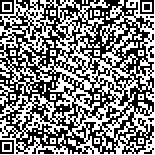| 摘要: |
| [摘要] 目的 调查门诊2型糖尿病患者对血糖控制与糖尿病足相关性知识的认知度及行为现状。方法 纳入2017-10-01~2018-02-28在四川大学华西医院内分泌代谢科门诊就诊的2型糖尿病患者共211例。记录患者一般临床资料及糖化血红蛋白(HbA1c)等检查结果。采用调查问卷方式收集糖尿病患者对糖尿病足认知度及行为的情况。结果 211例2型糖尿病患者中,125例(59.2%)认为血糖控制与糖尿病足的发生有关,67例(31.8%)患者不清楚血糖控制不佳可能导致糖尿病足溃疡的发生,19例(9.0%)患者认为血糖控制好坏与糖尿病足溃疡的发生无关。134例(63.5%)糖尿病患者从未进行双足自我检查。糖尿病患者对血糖控制与糖尿病足相关性认知度与年龄及受教育程度相关。结论 糖尿病患者对糖尿病足的认知度不够,尤其是受教育程度较低的老年糖尿病患者。因此,应加强有针对性的糖尿病足早期筛防教育,使其建立糖尿病足防大于治的理念。 |
| 关键词: 糖尿病 糖尿病足 糖尿病教育 |
| DOI:10.3969/j.issn.1674-3806.2019.12.04 |
| 分类号:R 587.1;R 195 |
| 基金项目:四川省科技厅应用基础研究项目(编号:2018JY0608) |
|
| Investigation on awareness and behavior status of diabetic patients to diabetic foot |
|
ZHOU Ying-ying, ZHA Pan-pan, JIANG Ya-xin, et al.
|
|
Special Medical Center/Department of General Practice, West China Hospital of Sichuan University, Chengdu 610000, China
|
| Abstract: |
| [Abstract] Objective To investigate the cognition degree and behavior status of the correlation between blood glucose control and diabetic foot in the outpatients with type 2 diabetes. Methods Two hundred and eleven patients with type 2 diabetes were included in this study from the Outpatient Department of Endocrinology and Metabolism of West China Hospital of Sichuan University during October 1, 2017 and February 28, 2018. The general clinical data and glycosylated hemoglobin(HbA1c) were recorded. Questionnaire was used to collect the diabetic patients′ awareness and behavior to diabetic foot. Results Among the 211 patients with type 2 diabetes, 125 cases(59.2%) believed that blood glucose control was related to the development of diabetic foot; 67 cases(31.8%) did not know that poor blood glucose control might lead to diabetic foot ulcers; 19 cases(9.0%) thought that the quality of blood glucose control had nothing to do with the occurrence of diabetic foot ulcers; 134 cases(63.5%) never had self examination of their feet. The diabetic patients′ awareness of the relationship between blood glucose control and diabetic foot was positively correlated with age and education. Conclusion The awareness of diabetic patients to diabetic foot is not enough, especially the elderly diabetic patients with lower education level. Therefore, it is necessary to strengthen the education of early screening and prevention of diabetic foot so as to establish the idea that prevention is more important than treatment. |
| Key words: Diabetes Diabetic foot Diabetes education |

